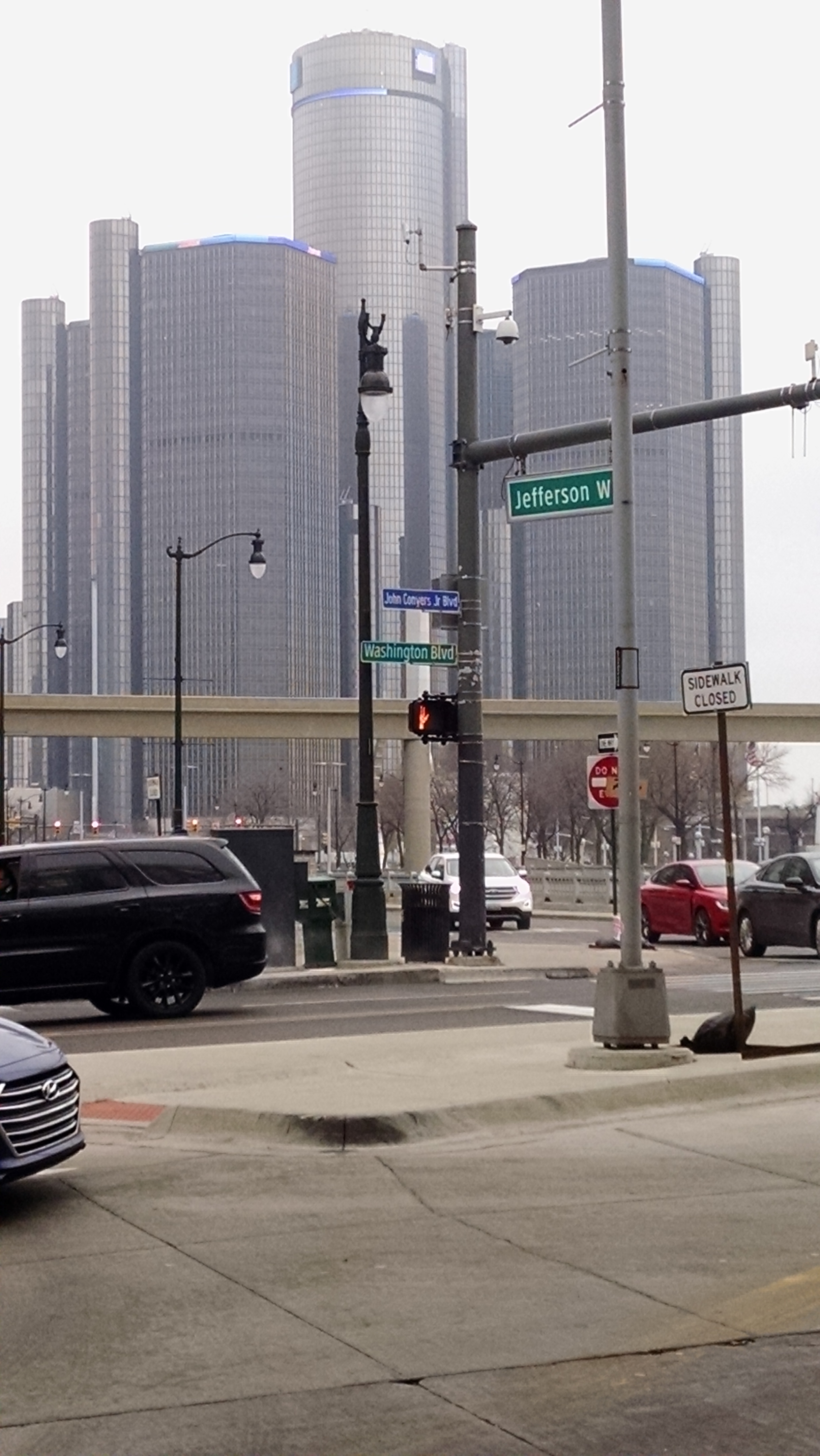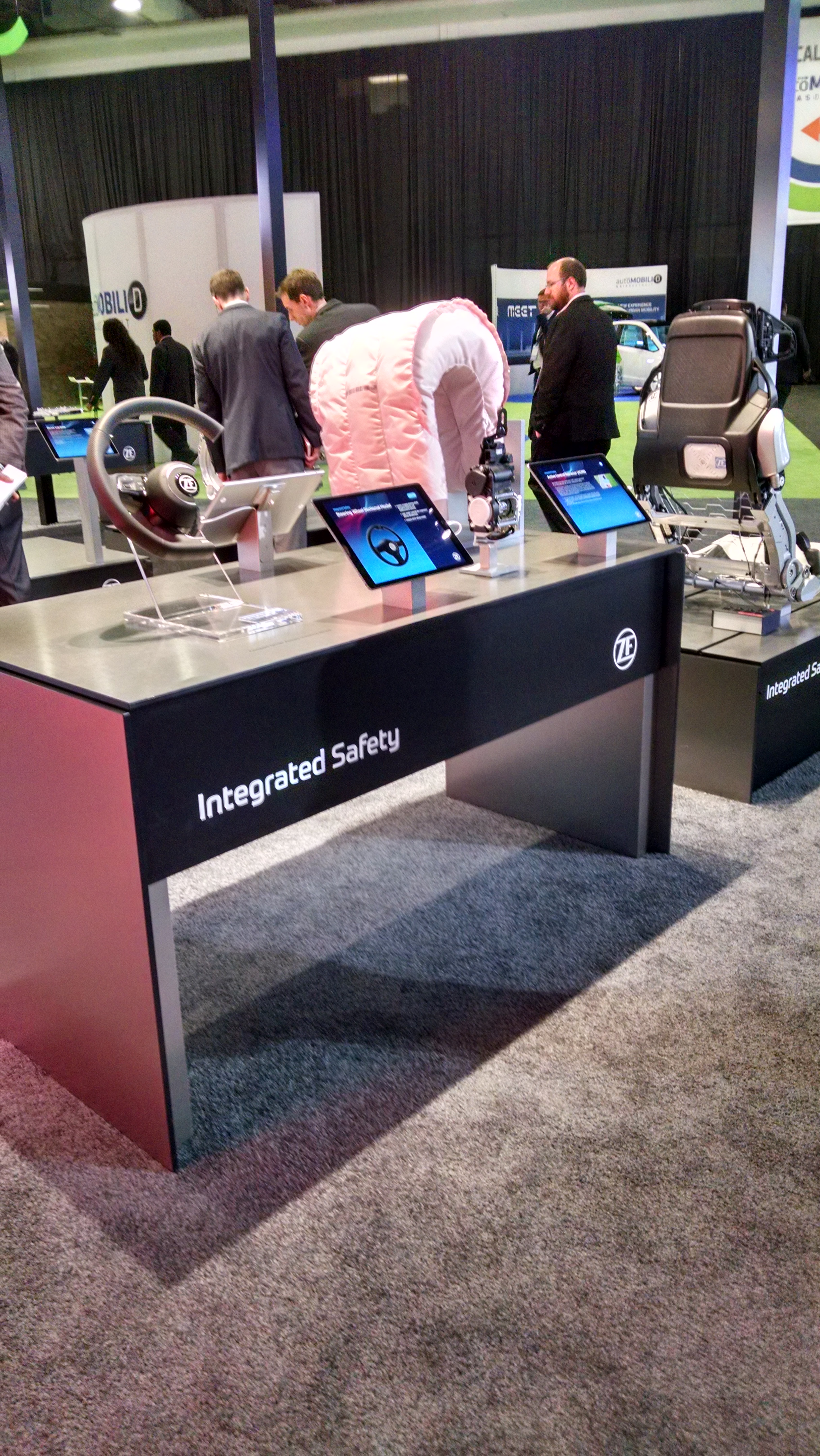Automakers Fight Fear of Driverless Vehicles
Automakers are not just cutting costs. They are pursuing a future filled with self-driving vehicles. But some drivers say they fear turning control over to what’s, in essence, a robot. And they lament losing the thrill of putting the pedal to the metal.

General Motors is in the midst of restructuring its operations, including cutting jobs and halting production at some plants, in part because the automaker wants to focus on building electric and autonomous vehicles.
And GM is far from alone in pursuing a future where vehicles drive themselves, no human required.
The recent North American International Auto Show in Detroit was filled with exhibits and discussions outlining the benefits of driverless transportation.
But surveys show many consumers remain wary of autonomous vehicles.
So automakers are spending a good deal of time and resources showcasing what self-driving cars can do.
And exploring why it’s good that they can do it.
Robot Roadways
The autonomous future was on the mind of 29-year-old Lyft driver Rabie Amin, as he hauled a few more fares towards the auto show at Cobo Center.
Amin was finishing the end of morning rush hour on a busy Detroit freeway before heading to his second job delivering pizzas.
Amin said he’d heard the auto show was heavily promoting autonomous vehicles.
He said that worries him. Not riding in driverless cars, but, in essence, being overtaken by them.
“Almost every other day or every day I think about it,” Amin said. “Because I think about my job, I think about the income I make from Lyft and pizza delivery. And I think about autonomous cars, (are they) really gonna take over one day? And if it does, then (where) will I be at?”
Amin glanced at heavy truck traffic in the next freeway lane.
He decides there is something else that worries him.
“Almost every other day or every day I think about autonomous cars. (Are they) really gonna take over one day? And if it does, then (where) will I be at?” — Lyft driver Rabie Amin
“Sometimes I think of even the semi-trucks. Is it one day gonna change that as well? It would be real scary to me if I see a semi next to me driving itself. Not about seeing (no) human driving it. But it’s about the human mind being able to maneuver and make a decision within a second or less in the traffic. And I don’t see how a computer can do that,” Amin said.
An Automatic Future
Nearly every exhibit at this year’s auto show in Detroit was designed in some way to push back against Amin’s fear of the unknown, often using devices that are now very familiar.
One exhibitor busily talked to an Alexa system, noting the device could not yet drive a car for someone.
But he said controlling a vehicle by voice command alone is a distinct possibility. Alexa can already do things like tell a driver what a flashing light on a dashboard means, plus call a repair shop automatically and set up an appointment, if need be.
But the auto show was about much more than just showing off technology available in the not-too-distant future to describe the glories of the coming autonomous age.

Transportation expert Carrie Morton was armed with data revealing that the soaring number of traffic fatalities in the U.S. are not caused by machines, but by human error.
“The automated vehicle doesn’t get distracted, doesn’t sip cocktails behind the wheel,” she said.
Morton is the deputy director of Mcity, a University of Michigan initiative to test autonomous vehicles and analyze consumers’ reaction to them.
Morton said, ironically, one key to making self-driving cars less daunting is to make them react even more like a human.
“When we pull up to a four-way stop at roughly the same time as another driver, usually one of us will inch out to indicate to the other driver that we want to proceed into the intersection and we’re taking right of way. Right now AV’s act very cautiously and they don’t always look like a human to other human drivers,” Morton said.
She adds that autonomous shuttles are already operating at the university’s Ann Arbor campus.
“In a very short period of time when people begin to ride them, they begin to trust them. And they begin to realize ‘I can do something else with my time and still get around freely.’ ” – Mcity Deputy Director Carrie Morton
The more people ride in them, Morton said, the more traveling without a driver becomes routine.
“What we find with our shuttle deployments, which were designed to understand the consumer experience, (is) that they’re very safe, they’re very conservative. And in a very short period of time when people begin to ride them, they begin to trust them. And they begin to realize ‘I can do something else with my time and still get around freely.’ ”
Self-driving shuttles are also operating in parts of downtown Detroit.
And Google’s Waymo division is working in Novi with Fiat Chrysler to build a self-driving minivan, while the Michigan Strategic Fund board just approved Waymo’s plan to own a factory in Metro Detroit.
Learning to Love the Machine
Yet car companies are well-aware some customers don’t love the idea of riding in a vehicle where control is not necessarily determined by their grip on a steering wheel.
A coalition of stakeholders and automakers including Audi, Toyota and General Motors is trying to smooth the transition to driverless vehicles by launching a promotional campaign.
It’s called PAVE — Partners for Automated Vehicle Education.
A video advertising the group compares self-driving vehicles to the days when the first Model T rolled off an assembly line.
“This will shape how civilization is,” a speaker in the video intones. “And I think that’s scary to a lot of people. Public trust is crucial to the roll out of self-driving cars.”

At the moment, autonomous vehicles are an urban experience.
Experts say traffic is slower and more contained on city streets and there are sometimes smart stop lights or other technology the vehicles can connect to.
It’s also an easier area to use what companies call “geo-fencing” and “enviro-fencing,” tethering vehicles to certain geographic areas and keeping them off the roads when environmental conditions turn snowy or slippery.
Consultants such as Navigant Research Senior Analyst Sam Abuelsamid predict autonomous vehicles won’t hit the highways en masse for decades.
But Abuelsamid, for one, says that day cannot come too soon for him.
”Most of the driving we do is extremely boring and monotonous,” he said. “If you’re driving (to Detroit) from Ann Arbor on I-94, no matter how much you love cars — and I love cars, I love driving — that’s a boring drive. I would just as soon hand that over to an autonomous system if I could.”
Abuelsamid said the more useful a driverless car can be, the more likely people will want to jump in one.
In fact, designers are pouring resources into ensuring the vehicles can take passengers from the very first mile of their trip to the very last.
Abuelsamid notes that Hyundai recently debuted an autonomous vehicle called the Elevate, which can literally pick up people with disabilities or who are elderly at their doorstep.
“Each of the wheels is attached to an articulating leg,” he said. “The legs just collapse down, it can drive along like a regular vehicle. And then when it gets to obstacles it can actually lift itself up and it can walk up stairs and walk over boulders and all kinds of different things. So it can be used for going right to somebody’s door to pick them up so they can get in the vehicle.”
Yet even walking cars were not enough to convince some in the auto show crowds that a car without a human driver should be the freeway to the future.
Sharon Renier said she fears autonomous vehicles would be of little use on the dirt roads and rough terrain in the rural area where she lives.
Worse than that, Renier laments, is that autonomous vehicles are taking away the intense feel of guiding a car through a tight turn, the roar of hundreds of horsepower triggered by just a push of the foot.
“Didn’t you have muscle cars when you were younger? Didn’t you like to go out and hang out with all the guys on a Saturday night and impress your gals? It’s a part of our culture that we’re gonna miss,” Renier said. “What about the Mustang, what about all these (powerful) cars that they’re still making? We’re gonna lose a lot of that. We’re losing more and more of what it is to be human.”
It’s a conundrum automakers face as they amp up investment in what seems to be an almost inevitable wave of driverless cars on the horizon.
Is it possible for manufacturers to keep what appeals most to many humans about the automobile and still ensure the vehicles are free of the human error that could grind traffic, and the future, to a halt?
Click on the audio link above to hear the full story
